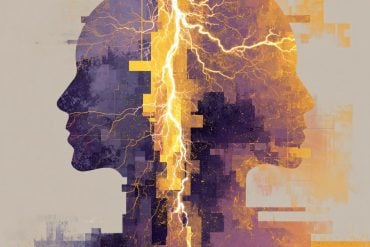Summary: The autonomic nervous system has the ability to spontaneously restore muscle function following nerve injury.
Source: Medical University of Vienna
The autonomic nervous system is known as the control center for involuntary bodily processes such as the beating of our hearts and our breathing.
The fact that this part of the nervous system also has the ability to spontaneously restore muscle function following a nerve injury was discovered by a research group at MedUni Vienna’s Department of Plastic, Reconstructive and Aesthetic Surgery as part of their study recently published in the Journal of Neuroscience.
Their findings may form the basis for improving and developing interventions to treat nerve lesions.
The research team led by Vlad Tereshenko and Oskar Aszmann from the Clinical Laboratory for Bionic Limb Reconstruction at MedUni Vienna’s Department of Plastic, Reconstructive and Aesthetic Surgery discovered this facet of the interaction between nerves and muscles—which was previously unknown to science—in the course of its preclinical research on facial nerves and muscles.
After a nerve has been injured or severed, it is no longer able to control the motor function of the facial muscles, resulting in facial paralysis in the animal model.
In some cases, the scientists observed spontaneous recovery of muscle function days or weeks after the nerve lesion. Using novel, complex techniques, they were able to establish that the autonomic nervous system takes over the function of the injured nerve, as it were.
“Until now, we were unaware that the autonomic nervous system can control muscle motor function with nerve impulses. As we have seen in our experiments, the parasympathetic nerve fibers form new functional neuromuscular synapses to do this.

“At the same time, the patterns of the muscle fibers are modified and, hence, the physiological properties of the autonomously reinnervated muscles are changed,” explains first author Vlad Tereshenko, outlining the key findings from the study.
Potential actor in nerve reconstruction
Following injuries or certain diseases, nerves can temporarily or permanently lose their ability to provide motor control to muscles. Well-established therapeutic concepts such as the relocation of nerves or nerve transplants are now available to remedy the resultant motor deficits.
However, clinical outcomes may be affected by several factors, such as the slow rate of nerve regeneration or the lack of donor nerves.
“By identifying this previously unknown ability of the autonomic nervous system, we have discovered a new potential actor in nerve reconstruction. The results of our study can therefore help to improve existing therapeutic measures and to develop new ones,” says Vlad Tereshenko, looking into the future.
Follow-up studies are expected to deepen our knowledge of this new facet of the neuromuscular system.
One of the questions to be addressed is whether and how autonomic nerve fibers can be surgically relocated in order to restore muscle function on a temporary or permanent basis.
About this neuroscience research news
Author: Press Office
Source: Medical University of Vienna
Contact: Press Office – Medical University of Vienna
Image: The image is in the public domain
Original Research: Closed access.
“Autonomic nerve fibers aberrantly reinnervate denervated facial muscles and alter muscle fiber population” by Vlad Tereshenko et al. Medical University of Vienna
Abstract
Autonomic nerve fibers aberrantly reinnervate denervated facial muscles and alter muscle fiber population
The surgical redirection of efferent neural input to a denervated muscle via a nerve transfer can reestablish neuromuscular control after nerve injuries.
The role of autonomic nerve fibers during the process of muscular reinnervation remains largely unknown. Here, we investigated the neurobiological mechanisms behind the spontaneous functional recovery of denervated facial muscles in male rodents.
Recovered facial muscles demonstrated an abundance of cholinergic axonal endings establishing functional neuromuscular junctions. The parasympathetic source of the neuronal input was confirmed to be in the pterygopalatine ganglion.
Furthermore, the autonomically reinnervated facial muscles underwent a muscle fiber change to a purely intermediate muscle fiber population myosin heavy chain type IIa.
Finally, electrophysiological tests revealed that the postganglionic parasympathetic fibers travel to the facial muscles via the sensory infraorbital nerve.
Our findings demonstrated expanded neuromuscular plasticity of denervated striated muscles enabling functional recovery via alien autonomic fibers.
These findings may further explain the underlying mechanisms of sensory protection implemented to prevent atrophy of a denervated muscle.







